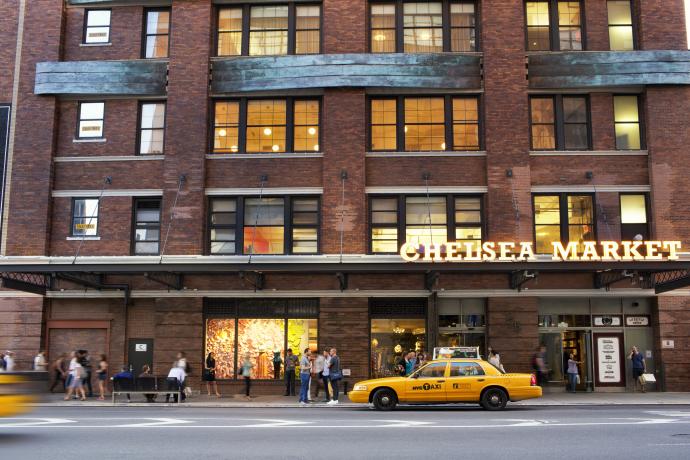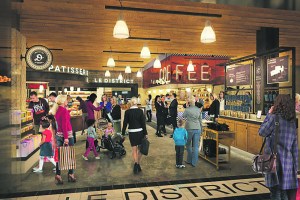Report: New York City is Food Hall Heaven, and Chelsea Market is No. 1
By Liam La Guerre December 8, 2016 10:30 am
reprints
New York City is the “indisputable food hall capital of the world,” proclaimed Cushman & Wakefield in its first “Food Halls of America” report released last week.
With 17 active and seven more planned food halls, the city has a double-digit lead on other major cities around the world and the country, becoming the nirvana for food halls, the report indicates.
“It’s way more affordable than opening a real, full-blown restaurant and plus you’re exposed to more foot traffic,” Garrick Brown, C&W’s vice president of retail research, told Commercial Observer. “In New York City for you to make it, you can’t just do well; you have to do great. But the pressure is a little bit off if you are a food-hall vendor. The space sort of acts as an incubator space.”
The report exempts food courts, open-air or seasonal markets or food destinations filled with fast-food vendors. (Hence, why the number is lower than CO’s analysis earlier this year.) Throughout the country, the next ranked competitor is Los Angeles (11), followed by Washington, D.C. (eight) and San Francisco (seven) for second and third, according to the report. And around the world, top competitors include Osaka, Japan, with nine and London with seven, Brown said.
Experts agree that New York is setting the tone for the food-hall world.

“A lot of that comes from the food culture in New York City,” Geoff Bailey of SCG Retail said. “New York City has the best food culture in the United States. From the restaurants and the chefs. New York City is a landmark and place where every major chef wants to plant their flag.”
Which is the best food hall in New York City? The report ranked Chelsea Market as No. 1—rather subjectivity without foot-traffic or survey numbers—as it has been credited with being one of the pioneers of the modern food hall movement, and it’s changing the game once again by revitalizing nonfood retail.
“Food is clearly the driver behind this project, but the success of its nonfood-related options certainly suggest what may be a future model for many urban retail projects,” the report says about the food hall. “Chelsea Market is a clear example of a project where food is the anchor.”
Following Chelsea Market’s ranking is the Great Northern Hall in Grand Central Terminal and Le District and Hudson Eats both at Brookfield Place.
Food halls have become popular around the globe, the report indicates, because of a foodie movement driven by celebrity chefs, cable TV food shows and channels, food-centered social media platforms and millennials.
“[Years ago] we thought the influx of the celebrity chefs would make people eat out less and cook at home,” Brown said. “The exact opposite happened. It inspired more people to try more food and eat out more often.”
The report predicts that by 2019 there could be as many as 200 (active or planned) food halls in America from about 96 as of the third quarter of 2016.
However, while the C&W report says “the food hall phenomena is perhaps in the second or third inning of the game” in the country, Brown said it’s maybe in the fourth or fifth in Manhattan, which has 18 of the city’s 24 active and planned locations. So instead, he said the growth will move to the outer boroughs, aligning with CO’s recent report on food halls.
“The food hall development in [Manhattan] is slowing a bit. I see the activity shifting to the other boroughs more and more,” Brown said. “In Manhattan, we are going to see a pause in the market so they can digest what’s going on.”


